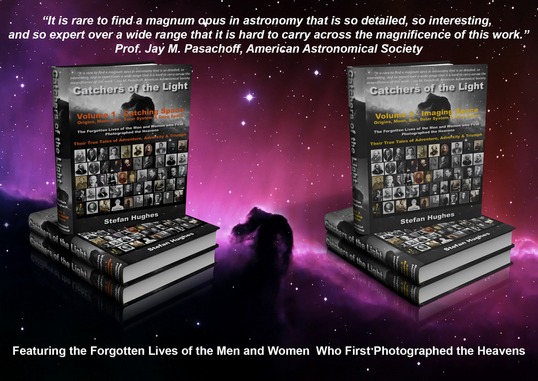'The Astronomer's Maid'

Born: 15th May 1857, Dundee, Angus (Forfarshire), Scotland.
Died: 21st May 1911, Boston, Suffolk, Massachusetts, USA
Williamina Paton Stevens Fleming will always be remembered by Astrophotographers for her discovery in 1888 of the ‘Horsehead’ Nebula, probably the most famous and iconic of all astronomical objects in the heavens. A remarkable achievement, considering that she had begun her astronomical career as the housekeeper of Edward Charles Pickering, the then Director of the Harvard College Observatory.
Williamina Paton Stevens Fleming never took a photograph of an astronomical object; indeed there is no evidence to suggest that she took a photograph of anything. Yet her place in the history of astrophotography is assured - because of a discovery she made – one for which modern Astrophotographers should both revere and revile her, for in almost equal measure.
For in 1888 she found on a photographic plate an object which is without doubt the most iconic and beautiful of all astronomical objects ever to be seen by human eyes – the famous ‘Horsehead’ Nebula. Let us now tell her story, which is one any author of fiction would be proud to write - of how a housemaid with no scientific training or qualifications became one of the world’s a greatest astronomers.
Her life begins not in the hallowed halls of Harvard College where she worked or amongst the stars of Orion where her ‘Horsehead’ lies, but in the streets of the ancient Scottish city of Dundee.
To read more on her life and work read the eBook chapter on Williamina Fleming: or buy the Book 'Catchers of the Light'.

'Horsehead' Nebula, 8-inch Bache Astrograph, Harvard College Observatory, 6th of February 1888

Buy the eBook or Printed Book at the 'Catchers of the Light' shop.